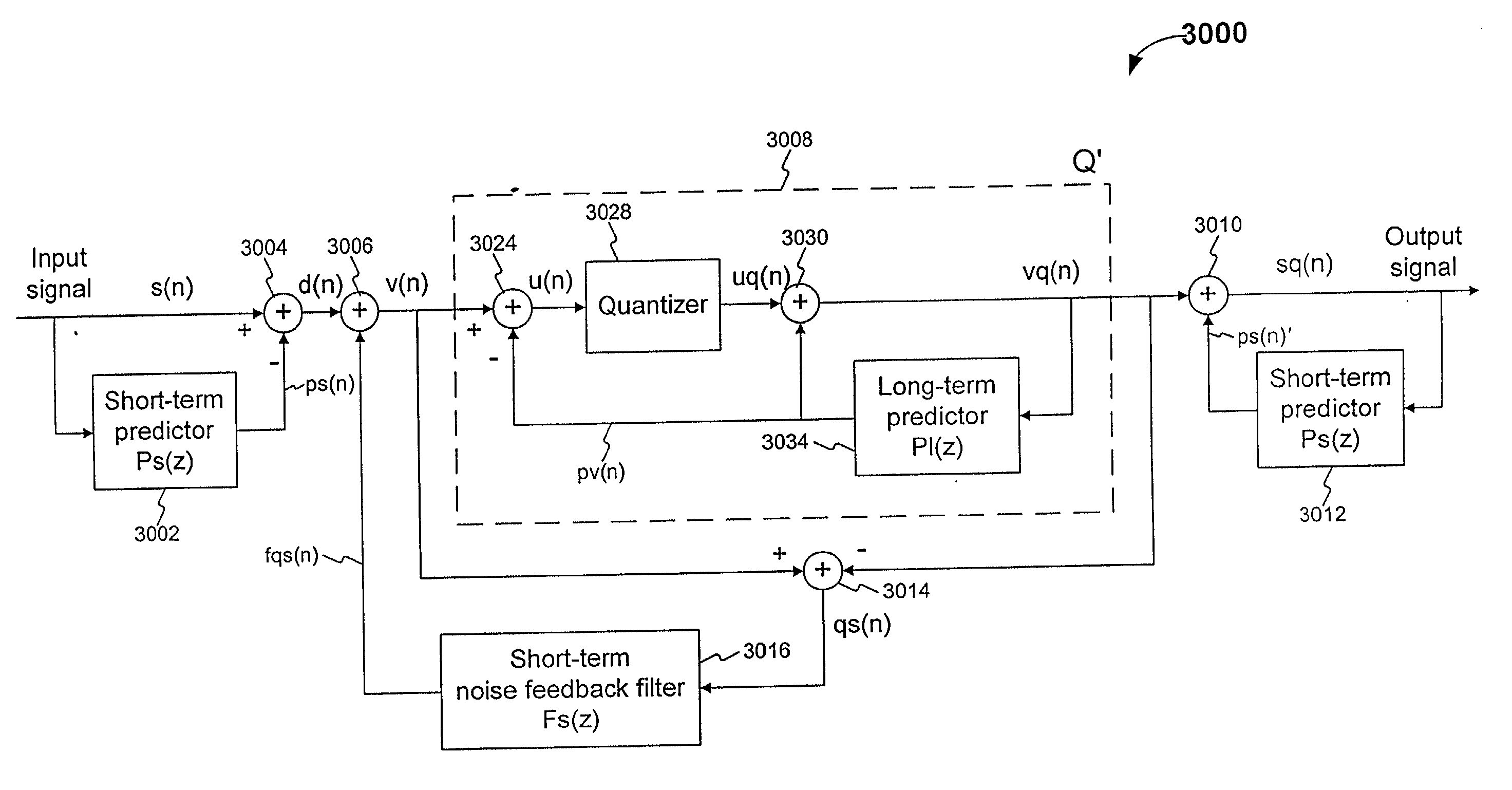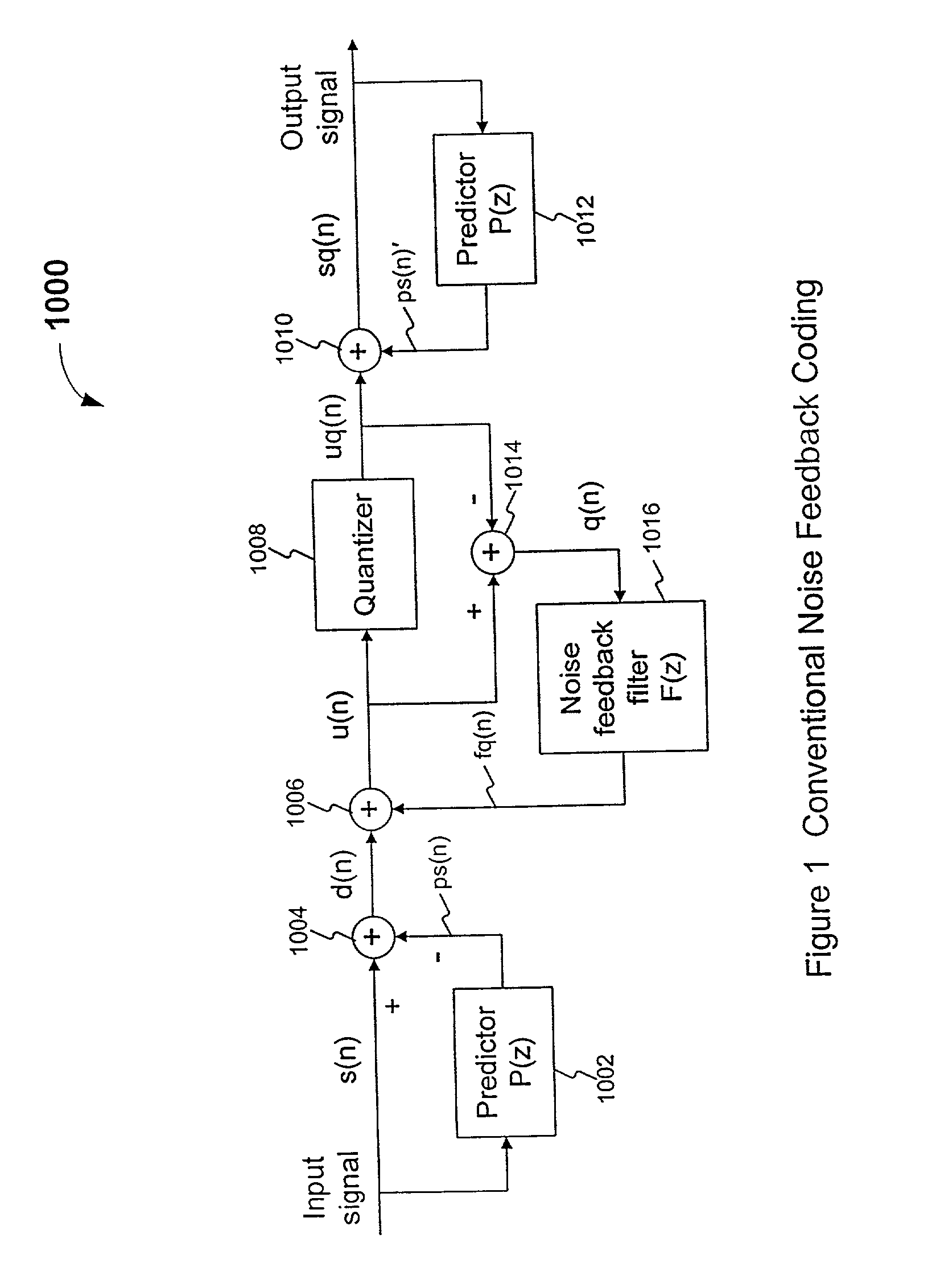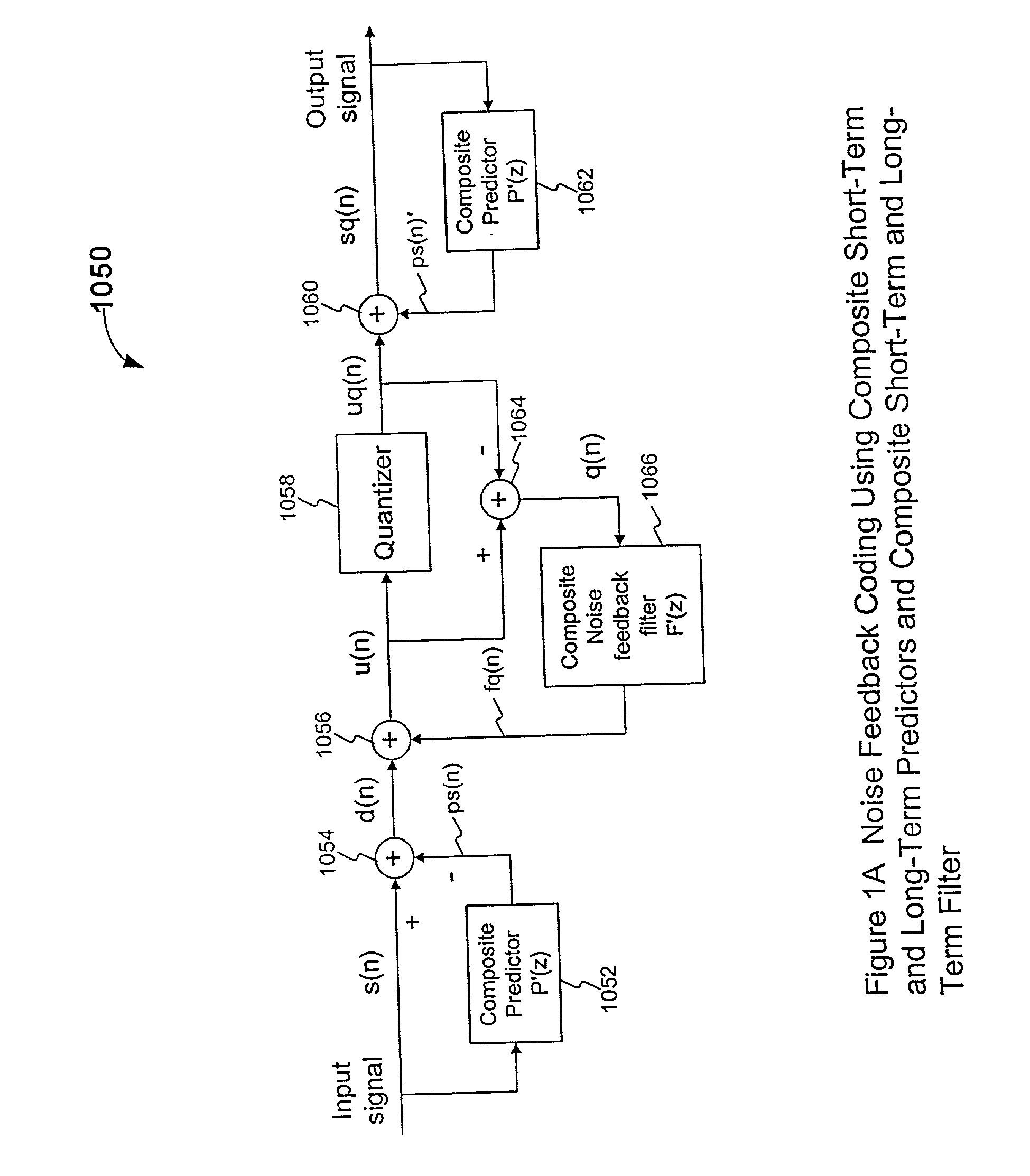Noise feedback coding method and system for efficiently searching vector quantization codevectors used for coding a speech signal
a vector quantization and noise feedback technology, applied in the field of digital communication, can solve the problems of noisy decoder output speech, coding distortion is perceived as a hissing noise, and the coding noise power often exceeds the speech power at high frequencies
- Summary
- Abstract
- Description
- Claims
- Application Information
AI Technical Summary
Benefits of technology
Problems solved by technology
Method used
Image
Examples
example specific embodiment
[0314] 2. Example Specific Embodiment
[0315] a. System
[0316] FIG. 13C is a block diagram of a portion of an example codec structure or system 1362 used in a prediction residual VQ codebook search of TSNFC 5000 (discussed above in connection with FIG. 5). System 1362 includes scaled VQ codebook 5028a, and an input vector deriver 1308a (a specific embodiment of input vector deriver 1308) configured according to the embodiment of TSNFC 5000 of FIG. 5. Input vector deriver 1308a includes essentially the same feedback structure involved in the quantizer codebook search as in FIG. 7, except the shorthand z-transform notations of filter blocks in FIG. 5 are used. Input vector deriver 1308a includes an outer or first stage NF loop including NF filter 5016, and an inner or second stage NF loop including NF filter 5038, as described above in connection with FIG. 5. Also, all of the filter blocks and adders (combiners) in input vector deriver 1308a operate sample-by-sample in the same manner as...
first embodiment
[0357] 1. ZERO-STATE Response--First Embodiment
[0358] FIG. 15A is a block diagram of an example ZERO-STATE response filter structure 1404a (a specific embodiment of filter structure 1404) used during the calculation of the ZERO-STATE response of q(n) in FIG. 13C.
[0359] If we choose the vector dimension to be smaller than the minimum pitch period minus one, or K<MINPP-1, which is true in our preferred embodiment, then with zero initial memory, the two long-term filters 5038 and 5034 in FIG. 13A have no effect on the calculation of the ZERO-STATE response vector. Therefore, they can be omitted. The resulting structure during ZERO-STATE response calculation is depicted in FIG. 15A.
[0360] FIG. 15B is a flowchart of an example method 1520 of deriving a ZERO-STATE response using filter structure 1404a depicted in FIG. 15A. In a first step 1522, an error vector qszs(n) associated with each of the N VQ codevectors stored in scaled VQ codebook 5028a is filtered (using filter 5016, for exampl...
PUM
 Login to View More
Login to View More Abstract
Description
Claims
Application Information
 Login to View More
Login to View More - R&D
- Intellectual Property
- Life Sciences
- Materials
- Tech Scout
- Unparalleled Data Quality
- Higher Quality Content
- 60% Fewer Hallucinations
Browse by: Latest US Patents, China's latest patents, Technical Efficacy Thesaurus, Application Domain, Technology Topic, Popular Technical Reports.
© 2025 PatSnap. All rights reserved.Legal|Privacy policy|Modern Slavery Act Transparency Statement|Sitemap|About US| Contact US: help@patsnap.com



